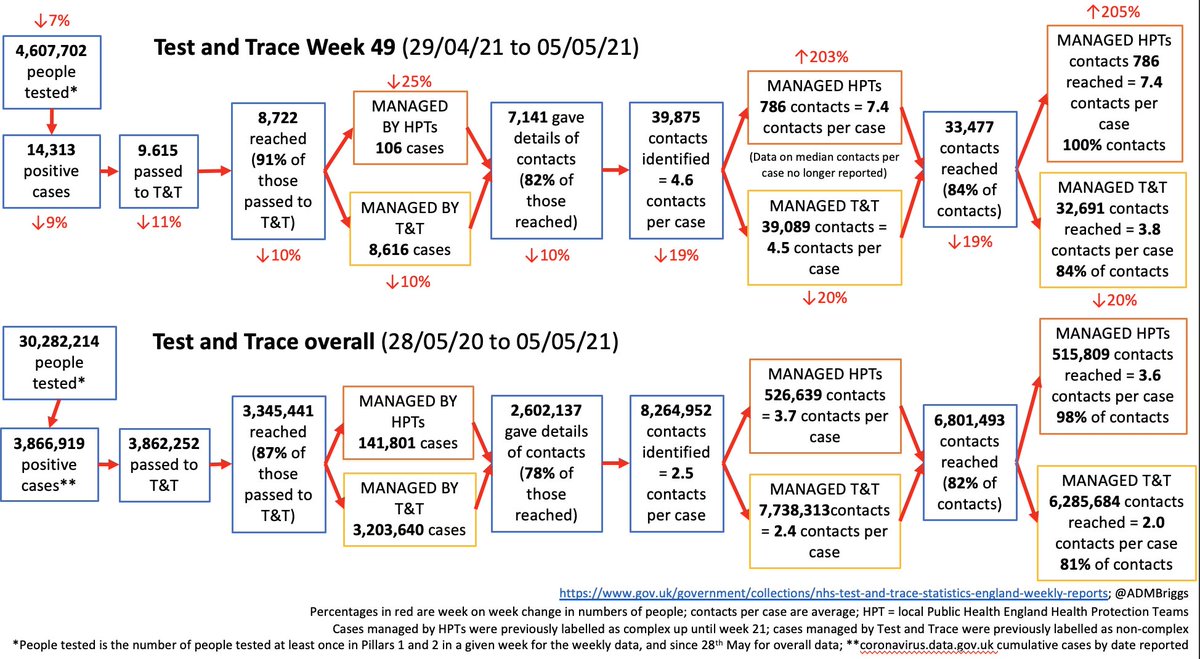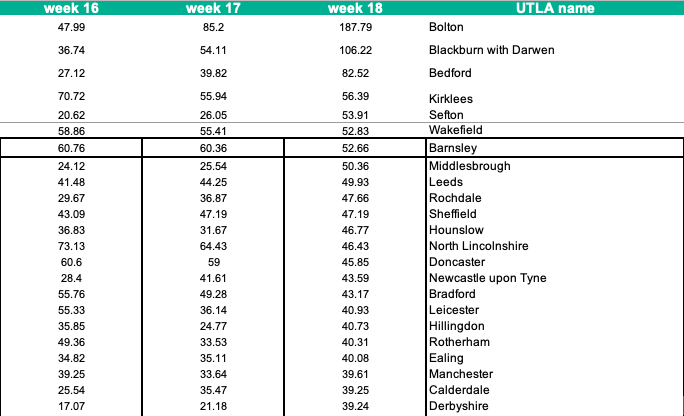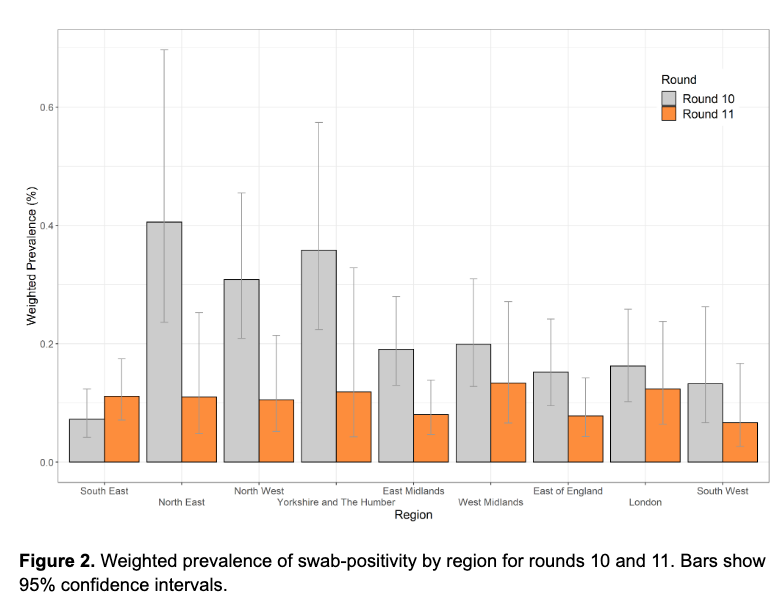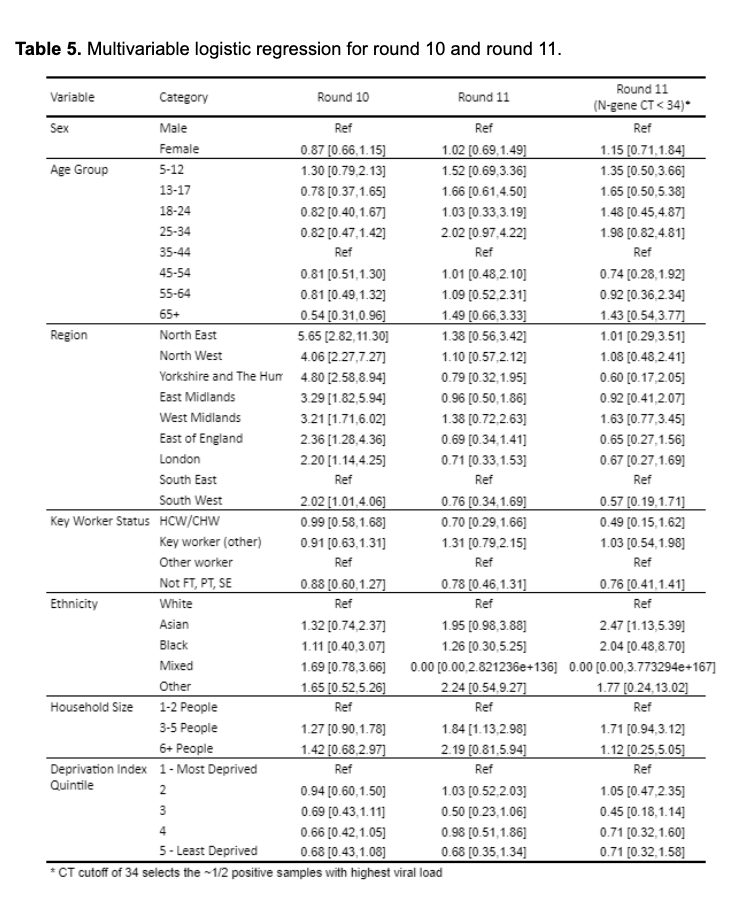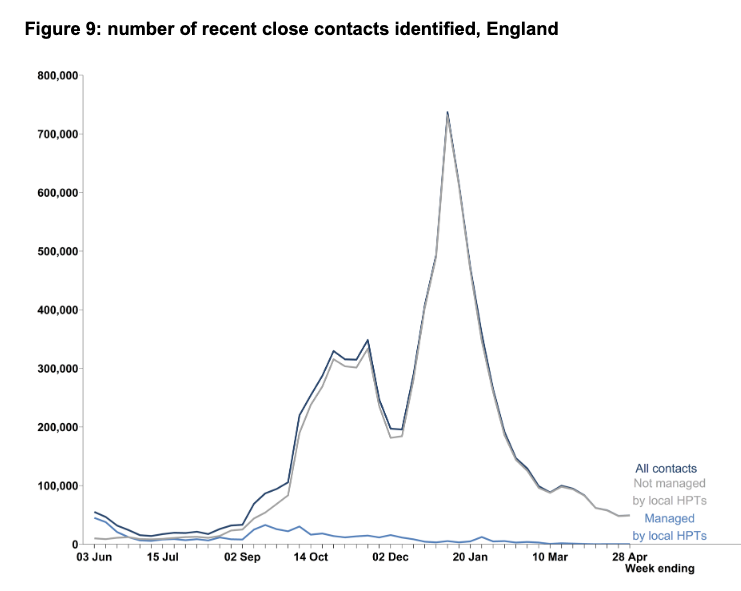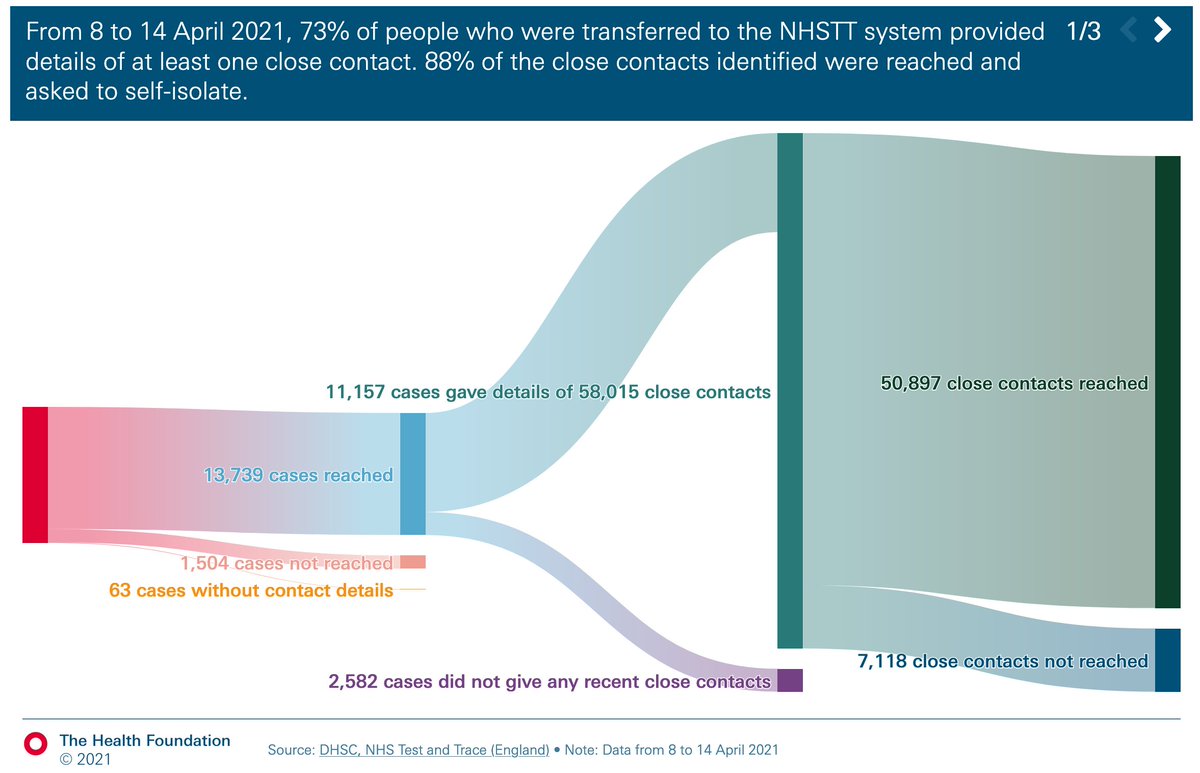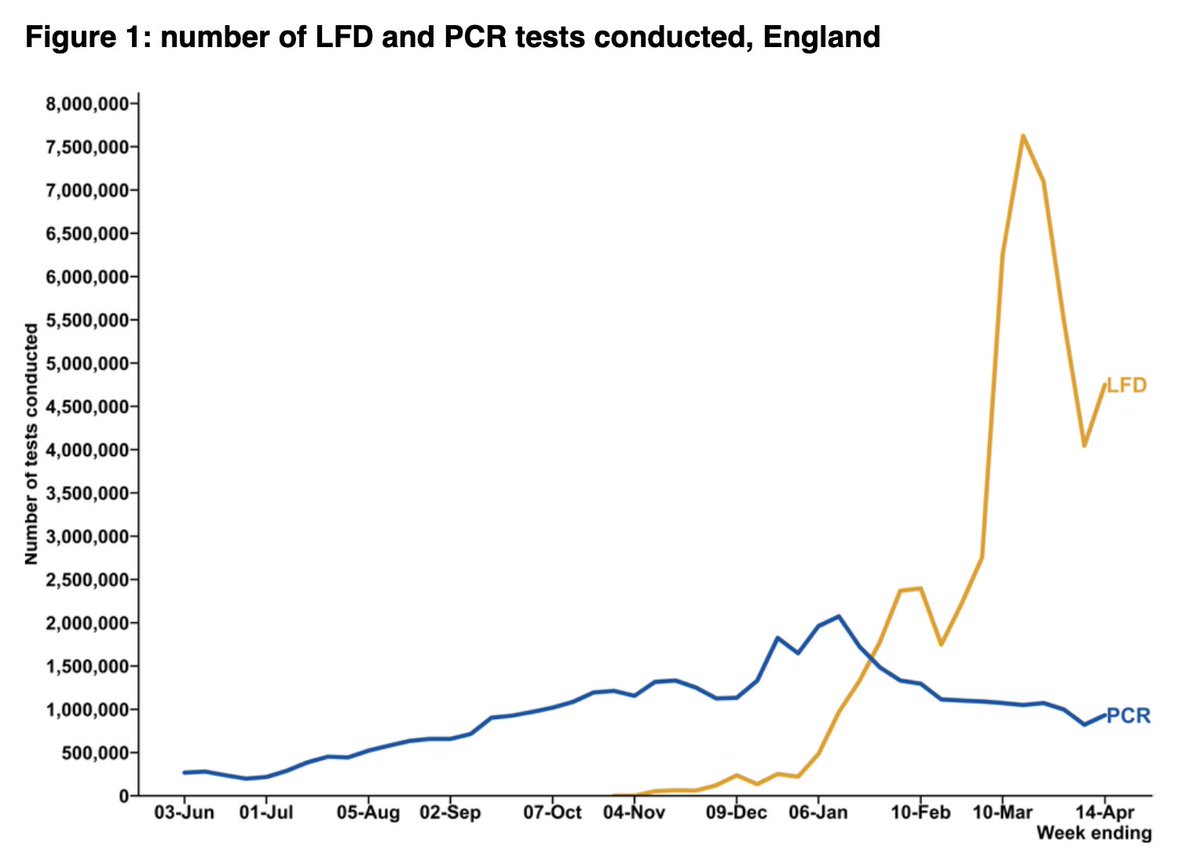
The weekly @PHE_uk surveillance report has just been published - 17th-23rd May. 🧵
- PCR positivity beginning to creep up
- BIG differences in case rates by age, region, ethnicity, and deprivation
gov.uk/government/sta…

- PCR positivity beginning to creep up
- BIG differences in case rates by age, region, ethnicity, and deprivation
gov.uk/government/sta…


While nationally, PCR positivity had been around 0.75% for the previous four weeks, it's crept up this week.
Now 0.87% in the most recent week.

Now 0.87% in the most recent week.


The regional/age split tells its own story with increasing case rates among 10-19y/o and other younger age groups, particularly in parts of N and East Mids.
Although also concerning early signal in parts of N and Mids in those aged 60+ (the heat map is for NW).


Although also concerning early signal in parts of N and Mids in those aged 60+ (the heat map is for NW).



And at local authority level, it's very stark.
Case rates ranging from 422/100,000 in Bolton and 331 in Blackburn with Darwen, to <5/100,000 in places like W Sussex and Cambridgeshire.


Case rates ranging from 422/100,000 in Bolton and 331 in Blackburn with Darwen, to <5/100,000 in places like W Sussex and Cambridgeshire.



These differences are reflected in the data on ethnicity by region, and deprivation by age.
Yet again, people from more deprived population groups and minority ethnic groups, particularly those of Asian ethnicity, are being hardest hit.

Yet again, people from more deprived population groups and minority ethnic groups, particularly those of Asian ethnicity, are being hardest hit.

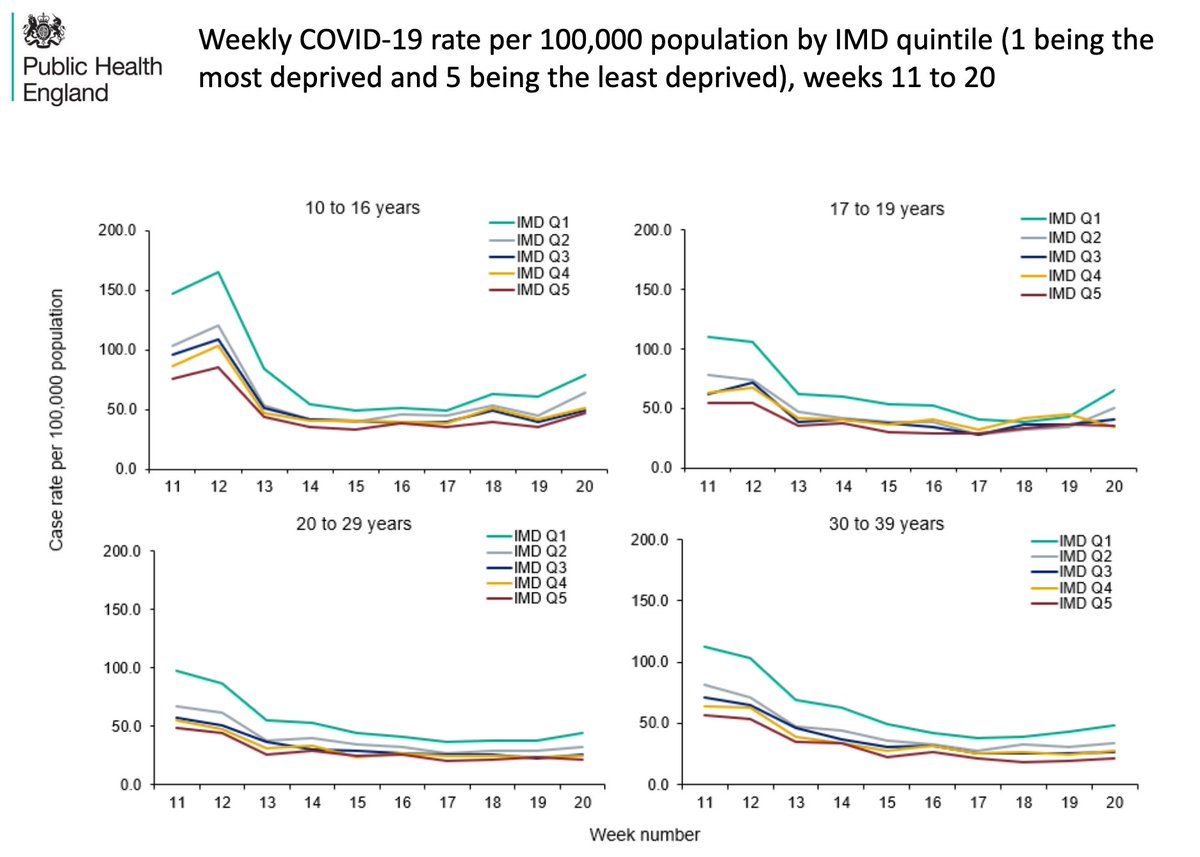
As case rates in some parts of the country rise, reported outbreaks in care homes and hospitals remain extremely low (yay!). 



With little change in report outbreaks among edu settings for the time being.
Reported outbreaks mainly from London, NW and East Mids (note, these data aren't adjusted for the numbers of educational settings in these regions)

Reported outbreaks mainly from London, NW and East Mids (note, these data aren't adjusted for the numbers of educational settings in these regions)


Finally on this, very early signal around possible increase in reported outbreaks linked to workplaces and to restaurants/cafes.
One to watch.

One to watch.


When it comes to hospitalisations, very limited signal overall but potential early signal of rise in admission rate in West Mids (up to 1.6/100,000 from 1.0 the week before) 



And as we know, some parts of the country are beginning to see rising numbers of inpatients.
Some patients will inevitably become unwell enough to require admission, and as case rates rise so will admission rates with a lag of 10 days or so.
This is Bolton's local hospital.

Some patients will inevitably become unwell enough to require admission, and as case rates rise so will admission rates with a lag of 10 days or so.
This is Bolton's local hospital.


The vaccine is definitely helping keep case rates lower, slowing transition and reducing the likelihood of severe disease and death.
They still work against the B.1.617.2 variant.
Please continue to get vaccinated when offered.
They still work against the B.1.617.2 variant.
Please continue to get vaccinated when offered.
https://twitter.com/kallmemeg/status/1396218839826894854?s=20
...this is not the case for everyone.
Local rising case rates are driven by structural inequalities in housing, employment etc, of which lower vaccine uptake is a symptom, not the cause.
To truly tackle COVID and level-up health requires addressing these structural drivers.
Local rising case rates are driven by structural inequalities in housing, employment etc, of which lower vaccine uptake is a symptom, not the cause.
To truly tackle COVID and level-up health requires addressing these structural drivers.

And in the mean time, increasing vaccination uptake remains a solution for preventing the most severe outcomes.
About which there's thankfully a healthy evidence base (HT @Azeem_Majeed @bmj_latest):
bmj.com/content/373/bm…
About which there's thankfully a healthy evidence base (HT @Azeem_Majeed @bmj_latest):
bmj.com/content/373/bm…
PHE surveil rpt☝️ @felly500 @deb_cohen @martinmckee @carolecadwalla @mgtmccartney @ADPHUK @Jeanelleuk @fascinatorfun @profchrisham @petermbenglish @HPIAndyCowper @Davewwest @HSJEditor @KateAlvanley @IndependentSage @nedwards_1 @SamanthaJonesUK @ewanbirney
@FurberA @Dr_D_Robertson
@FurberA @Dr_D_Robertson
• • •
Missing some Tweet in this thread? You can try to
force a refresh





